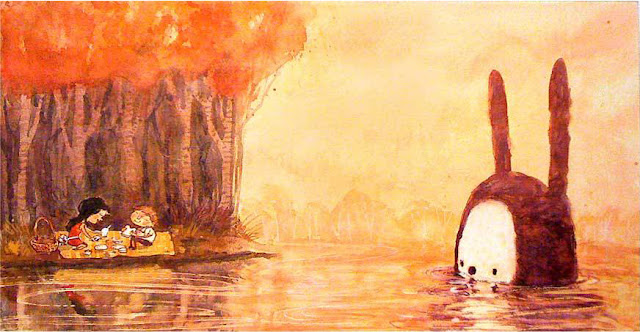 |
| "The Wedding Party" oil on canvas 70" x 95" |
 |
| "The Crown" oil on canvas 23" x 19" |
 |
| "The Night" oil on canvas 19.5" x 30" |
 |
| "The Well" oil on canvas 64" x 87" |
 |
| "Drain Pipe" charcoal on paper 14" x 10" |
I just received an email from Aron Wiesenfeld with a link to a preview of his show opening this weekend at
Arcadia Galley in NYC (you can see the preview
here). I don't know that I have a whole lot to add to what I said before about his work (see my
previous post back in Dec. 2009) but I'll try.
I'm a tremendous fan of his ability to create haunting atmospheres, compelling characters and intriguing narratives. These are stories. They draw us in compelling us to participate in the creative act, demanding that we ponder what led up to, or will follow the events depicted. They are mysteries. Not mysteries to be solved but to be savored. They do not address real life, but rather how life sometimes feels. Emotions are heightened. And one of the most powerful is that unnameable sense of being different, unique, alone; a feeling that can be full of both dignity and despair. Trapped in the uniqueness of our own experience it is a wonder that we can communicate at all. That even this sensation can be conveyed is something of a small miracle.
You can see more of his work on his website (
aronwiesenfeld.com) or on his
flickr page.








































